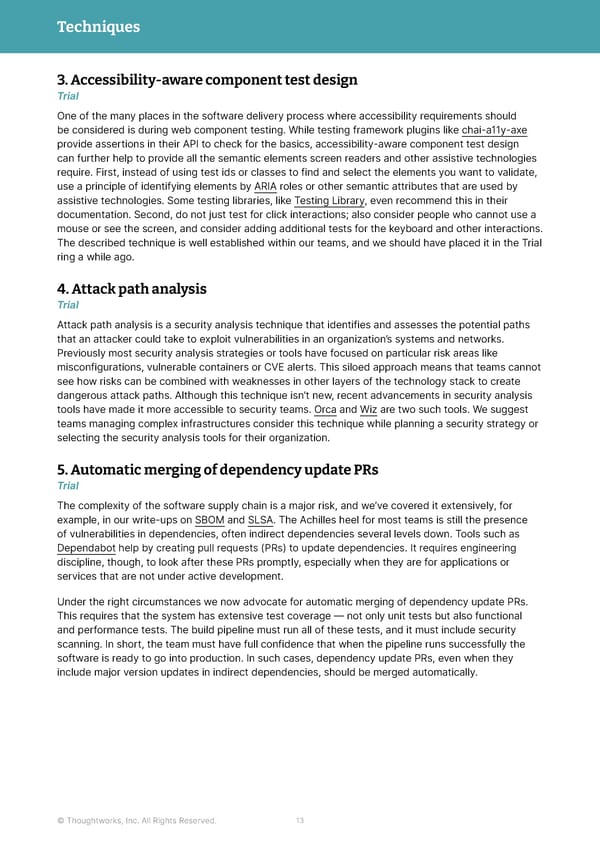Techniques 3. Accessibility-aware component test design Trial One of the many places in the software delivery process where accessibility requirements should be considered is during web component testing. While testing framework plugins like chai-a11y-axe provide assertions in their API to check for the basics, accessibility-aware component test design can further help to provide all the semantic elements screen readers and other assistive technologies require. First, instead of using test ids or classes to find and select the elements you want to validate, use a principle of identifying elements by ARIA roles or other semantic attributes that are used by assistive technologies. Some testing libraries, like Testing Library, even recommend this in their documentation. Second, do not just test for click interactions; also consider people who cannot use a mouse or see the screen, and consider adding additional tests for the keyboard and other interactions. The described technique is well established within our teams, and we should have placed it in the Trial ring a while ago. 4. Attack path analysis Trial Attack path analysis is a security analysis technique that identifies and assesses the potential paths that an attacker could take to exploit vulnerabilities in an organization’s systems and networks. Previously most security analysis strategies or tools have focused on particular risk areas like misconfigurations, vulnerable containers or CVE alerts. This siloed approach means that teams cannot see how risks can be combined with weaknesses in other layers of the technology stack to create dangerous attack paths. Although this technique isn’t new, recent advancements in security analysis tools have made it more accessible to security teams. Orca and Wiz are two such tools. We suggest teams managing complex infrastructures consider this technique while planning a security strategy or selecting the security analysis tools for their organization. 5. Automatic merging of dependency update PRs Trial The complexity of the software supply chain is a major risk, and we’ve covered it extensively, for example, in our write-ups on SBOM and SLSA. The Achilles heel for most teams is still the presence of vulnerabilities in dependencies, often indirect dependencies several levels down. Tools such as Dependabot help by creating pull requests (PRs) to update dependencies. It requires engineering discipline, though, to look after these PRs promptly, especially when they are for applications or services that are not under active development. Under the right circumstances we now advocate for automatic merging of dependency update PRs. This requires that the system has extensive test coverage — not only unit tests but also functional and performance tests. The build pipeline must run all of these tests, and it must include security scanning. In short, the team must have full confidence that when the pipeline runs successfully the software is ready to go into production. In such cases, dependency update PRs, even when they include major version updates in indirect dependencies, should be merged automatically. © Thoughtworks, Inc. All Rights Reserved. 13
 Thoughtworks Technology Radar Page 12 Page 14
Thoughtworks Technology Radar Page 12 Page 14